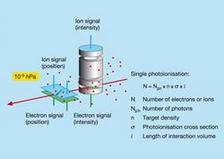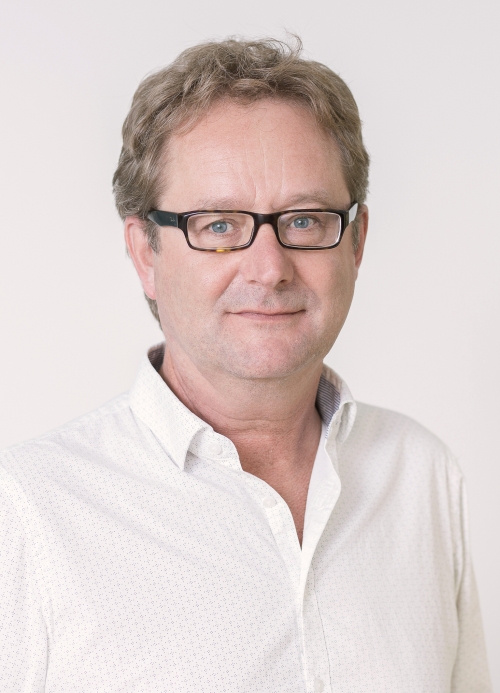The gas monitor detectors provide non-invasive measurements of the shot-to-shot intensity. To the right: A Faraday cup counts the electrons and ions that are produced as the FEL pulse passes through the ionization chamber containing nitrogen or rare gases at very low pressure. To the left: The two split electrodes determine the horizontal position of the beam.
For many users the most important parameter is the intensity, which varies from pulse to pulse due to the SASE (self-amplified spontaneous emission) process. Depending on the operation conditions of FLASH, the energy per bunch is typically in the range of 50-250 μJ. The intensity monitors at FLASH have to cover the full spectral range of the FEL beam, 4.2-45 nm, as well as the extended dynamic range from spontaneous undulator radiation to SASE in saturation. To accomplish these requirements, a state-of-the-art gas monitor detector (GMD) has been developed to perform a non-invasive measurement of the intensity of each individual pulse within a pulse train.
When a FEL pulse passes through the ionization chamber of the detector, the gas inside is ionized, and an electric field accelerates the ions upwards and the electrons downwards to be detected by Faraday cups. From the resulting electron and ion currents the absolute number of photons in each shot can be deduced with an accuracy of 10 percent. Furthermore, the FEL pulse passes in between two split-electrode plates, allowing the pulse-resolved determination of the horizontal and vertical position of the beam.
Two pairs of gas monitor detectors are integrated into the FEL beamline on the way to the experimental hall as permanent intensity and beam position monitors. One set of two GMDs is located at the end of the accelerator tunnel and a second one at the beginning of the experimental hall. A 15m long gas filled attenuator is positioned between these two sets of GMDs. The gas in the ionization chamber has a very low pressure of some 10-6 mbar (10-5 hPa), and it is nearly transparent to the FEL pulse that proceeds unaltered to the experimental stations.
CONTACT
|
|
References:
[1] K. Tiedtke et al., Gas-detector for X-ray lasers , J. Appl. Phys. 103, 094511 (2008); http://dx.doi.org/10.1063/1.2913328
[2] A. Sorokin et al., Method based on atomic photoionization for spot-size measurement on focused soft X- ray free-electron laser beams , Appl. Phys. Lett. 89, 221114 (2006); http://dx.doi.org/10.1063/1.2397561
[3] M. Richter et al., Measurement of gigawatt radiation pulses from a VUV/EUV free-electron laser , Appl. Phys. Lett. 83, 2970-2972 (2003);
http://dx.doi.org/10.1063/1.1614417








